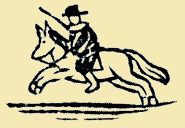- Yes!
- Group Sculptures
- Mirrors
- Sculpture Gallery
- Presents
- Have You Seen My Kitty?
- Magic Hat
- Hotseat, or, The Press Conference
- “I’ll follow you!”: A choral speech
- Three Worlds
- Two-character exchanges
- “Now I am alone”: The soliloquy
- Group voice: Sharing a character
- Showdown: Oberon vs. Titania
- Planning the Project: What do you want your students to achieve?
- Planning the Project: Making room for Shakespeare
- Planning the Project: The Final Performance
- A sample sequence
- Laying the foundation, establishing some rituals
- Preparing for the journey: A checklist
- We shall not cease from exploration

Materials needed:
An open area in the room; copies of Scene Three of Midsummer (Scene Three). Time needed:
20-30 minutes Students participating:
everyone at once, teacher too! Some scenes in the plays present opportunities for group performance – and often in ways not immediately apparent in the text. In Scene Three of A Midsummer Night's Dream, Oberon and Titania, King and Queen of the Fairies, meet and have a heated argument, mostly over a human “changeling boy” Titania has adopted. Oberon wants the boy for his “train,” and Titania, who knew the boy’s mother, refuses. This scene can be worked as a two-character scene. But here’s where the group fun comes in: Titania has a team of fairies, and Oberon has his train, according to the stage directions, while his helper Puck is already on stage. In working with students at Winedale – especially in Dr. Ayres’s Camp Shakespeare summer program – this moment is often used as a way of getting everyone involved. The fun here is to invent the fairy world through the movement and sounds and gestures of all these creatures – Oberon and his “team” on one side, Titania and her fairies on the other. There are two ways to do this: You can have fun with a boy vs. girl set-up – all the boys on Oberon’s side, all the girls on Titania’s – or you can just have two mixed groups. In our edited version of the argument, we take out the long, beautiful, haunting speeches by Titania, simply because they can sink a young student unfamiliar with the text. So the argument itself is brisk and fairly direct, which leaves time to play with the two teams. There are all sorts of questions to ask that can lead to new ideas in the performance. How does Oberon’s squad move? How do they enter? How do they position themselves in relation to their boss? How do Titania’s fairies enter, and how do they support their queen? How do the two groups face off? Are there strange noises, different sounds, from each group? How does Titania’s group exit? It can be fun to develop this into an energetic, dynamic scene where everyone is busy the entire time, and it can be done in about 20 minutes as you continue to add layers.
An open area in the room; copies of Scene Three of Midsummer (Scene Three). Time needed:
20-30 minutes Students participating:
everyone at once, teacher too! Some scenes in the plays present opportunities for group performance – and often in ways not immediately apparent in the text. In Scene Three of A Midsummer Night's Dream, Oberon and Titania, King and Queen of the Fairies, meet and have a heated argument, mostly over a human “changeling boy” Titania has adopted. Oberon wants the boy for his “train,” and Titania, who knew the boy’s mother, refuses. This scene can be worked as a two-character scene. But here’s where the group fun comes in: Titania has a team of fairies, and Oberon has his train, according to the stage directions, while his helper Puck is already on stage. In working with students at Winedale – especially in Dr. Ayres’s Camp Shakespeare summer program – this moment is often used as a way of getting everyone involved. The fun here is to invent the fairy world through the movement and sounds and gestures of all these creatures – Oberon and his “team” on one side, Titania and her fairies on the other. There are two ways to do this: You can have fun with a boy vs. girl set-up – all the boys on Oberon’s side, all the girls on Titania’s – or you can just have two mixed groups. In our edited version of the argument, we take out the long, beautiful, haunting speeches by Titania, simply because they can sink a young student unfamiliar with the text. So the argument itself is brisk and fairly direct, which leaves time to play with the two teams. There are all sorts of questions to ask that can lead to new ideas in the performance. How does Oberon’s squad move? How do they enter? How do they position themselves in relation to their boss? How do Titania’s fairies enter, and how do they support their queen? How do the two groups face off? Are there strange noises, different sounds, from each group? How does Titania’s group exit? It can be fun to develop this into an energetic, dynamic scene where everyone is busy the entire time, and it can be done in about 20 minutes as you continue to add layers.
